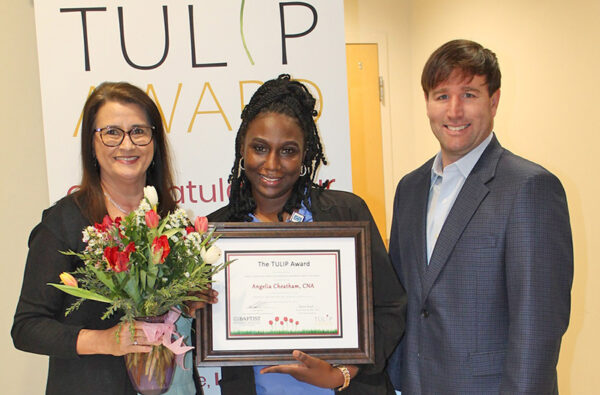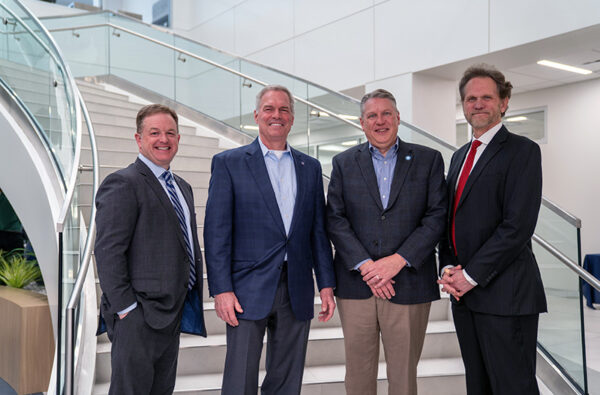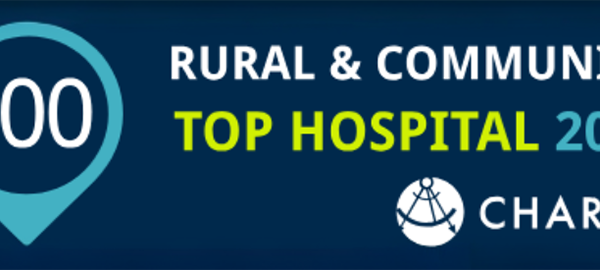Every day, patients like Marthanne Maroney face decisions about their health, largely based on symptoms and the results of tests done to evaluate them. But what if a seemingly innocuous, unrelated finding from a test performed for other reasons became as important as the initial reason for the test? In Maroney’s case, the radiologic test, which produced an accidental finding, may just have saved her life.
Lung cancer is the No. 1 cancer killer in the US and worldwide. Survival depends on catching it early when it might still be curable. Yet, screening for early lung cancer has largely lagged behind screening for other diseases like breast, cervical, colon, and prostate cancer due to lack of technology. Although low-dose CT screening for lung cancer has recently become possible, adoption still lags behind significantly. Only 3 to 4 percent of eligible patients participate in screening.
“Our challenge has been how to find an early stage 1 lung cancer,” said Dr. Todd Robbins, lung cancer surgeon and co-director with Dr. Jeffrey Wright of the Incidental Lung Nodule Program, which is part of the Multidisciplinary Thoracic Oncology Program at Baptist Cancer Center. As a parallel but closely related step to developing a world-class lung cancer screening program, the team decided to attack the problem of proper management of incidentally detected lung nodules – spots detected in the lungs of patients who had X-rays or CT scans performed for completely unrelated reasons – some of which turn out to be lung cancer.
In 2012, Dr. Robbins and members of his team visited providers in Kentucky’s highest lung cancer incidence area to examine how they were implementing their lung cancer screening program. “We found they had the same challenges we did, despite the evidence of benefit, there was no mechanism for insurance coverage at the time,” said Dr. Robbins. “We decided to build the program by initially focusing on patients with existing scans that identified lung spots that could be cancer.
“I went to Dana Dye, CEO and administrator of Baptist Memphis, and explained what we were doing and she liked the idea. The Baptist Foundation, led by Scott Fountain, Jenny Nevels and Dr. Rodney Wolf, gave us a grant to get started. This couldn’t have happened otherwise,” said Dr. Robbins.
Understanding the logic behind this approach requires looking at the bigger technical picture at Baptist. Any patient in the Baptist system who undergoes a diagnostic scan that includes a part of the chest, regardless of the actual reason for the test, has the potential to be screened for lung cancer. When a doctor uses a diagnostic scan like an MRI or CT to investigate an injury from a car wreck or, in the case of a patient like Maroney who arrived at the ER with unexplained abdominal pain and had a CT scan of her abdomen, the team has tweaked Epic, Baptist’s electronic health record system, to capture results that use certain specific language. The team worked with Drs. Robert Optican and Keith Tonkin, radiologists at Mid-South Imaging and Therapeutics (MSIT), to develop a list of key words that trigger real-time tracking of potential lung cancer lesions. “If a radiologist uses certain words like “tumor”, “nodule”, “mass” or “lesion,” Epic sweeps those records to our group,” said Dr. Raymond Osarogiagbon, an oncologist/hematologist and director of Thoracic Oncology Research Group and co-director of the Multidisciplinary Thoracic Oncology Program.
Maroney, 73, smoked for 25 years during her younger days. Her case clearly proves the power of Baptist’s Incidental Lung Nodule Program. In October 2016, she developed severe abdominal pain, went to an emergency room in a different health care system and, after doctors took scans of her abdomen, she had an emergency appendectomy. Those scans also revealed spots on her kidney. She saw a urologist about the kidney spots, which turned out to be nothing. The scan, however, also picked up on a nodule in her lung. She discovered the finding by reviewing her paperwork and talking to her Baptist Medical Group primary care doctor. In February 2017, her doctor connected her with the Baptist Multidisciplinary Thoracic Oncology Program.
Even if humans fail, the Epic technology catches cases like hers. “We’re a safety-net system to provide backup for busy clinicians who can easily be distracted by the primary problem for which the scan was done in the first place,” said Dr. Robbins. In the clinic, a group of specialists, surgeons, radiologists, and pulmonologists gather to review patient cases like Maroney’s. In one month, the program may receive about 250 scans.
“We then review those scans to take a closer look. Of those 250, about 50 may need no follow up, 150 we may follow closely with no action, and anywhere from 30 to 50 may require immediate follow up,” said Dr. Robbins.
The thoracic team, specifically pulmonary nodule navigators Amanda Epperson, RN, and Diane Richards, RN, provides the critical review and support work for the programs. Together, they review thousands of records that contain specific coded language. The program requires doctors to contact patients out of the blue to inform them of a possible finding. “At the start, we thought we might experience resistance or even anger about reviewing scans for patients with whom we had no pre-existing relationship, but we found the opposite. Almost 100 percent of the patients agreed to come in for further review,” said Dr. Robbins.
In 2016, the program detected 44 patients with lung cancer. Already in the first half of 2017, 32 lung cancer cases have been found through the program. For these lung doctors, this is real progress. Usually only one in 10 lung cancer patients will be diagnosed in stage 1, the earliest stage. So far about 70 percent of the lung cancer patients found through the Lung Nodule Program have been detected in stage 1, meaning their lung cancer is most likely to be cured with treatment. By the time a patient presents with symptoms of lung cancer, it is usually highly advanced and survival is unlikely.
“Efforts like this are moving the needle for lung cancer survival for the first time in more than 30 years,” said Dr. Robbins. “If we can catch 100 patients at Stage 1, survival rates are as high as 80 or 90 percent. At stage IV, only four out of 100 patients will survive,” said Dr. Osarogiagbon. Because the majority of the spots in a lung are benign, a complex set of decisions must be made to correctly separate patients who need intervention from the vast majority who can either be watched closely or discharged without further testing.
Dr. Osarogiagbon’s first goal was to focus on building and maintaining the complex infrastructure needed to support this decision making. “Neither could happen without infrastructure that we had to build first,” he said. The Baptist program launched with a $900,000 grant from the Baptist Memorial Health Care Foundation and now, the program supports itself.
When she had surgery for her appendicitis, little did Maroney know her early scans would prove even more important down the road. Now understanding how the Epic technology plays a critical role in connecting all the parties, she feels even stronger about Baptist and the network.
“It became clear to me how important it is to stay within the same system.”
The Baptist Cancer Center lung programs, driven by intense physician dedication, represent the critical intersection of technology and innovative research. With both, patients like Maroney have greater hope for survival. “Our goal is to standardize these programs across the entire system with the ability to review 200,000 to 300,000 records annually,” said Dr. Robbins.






